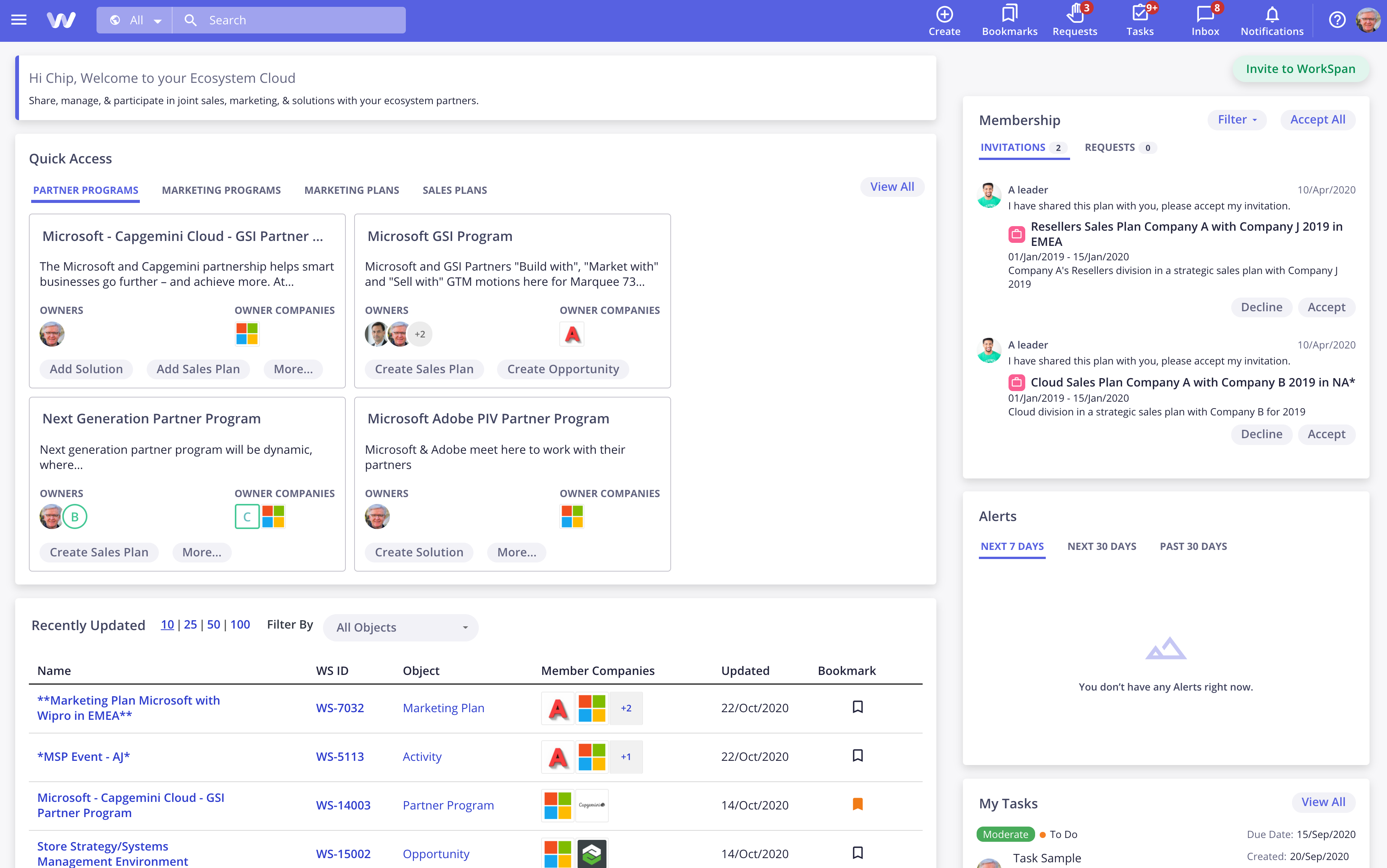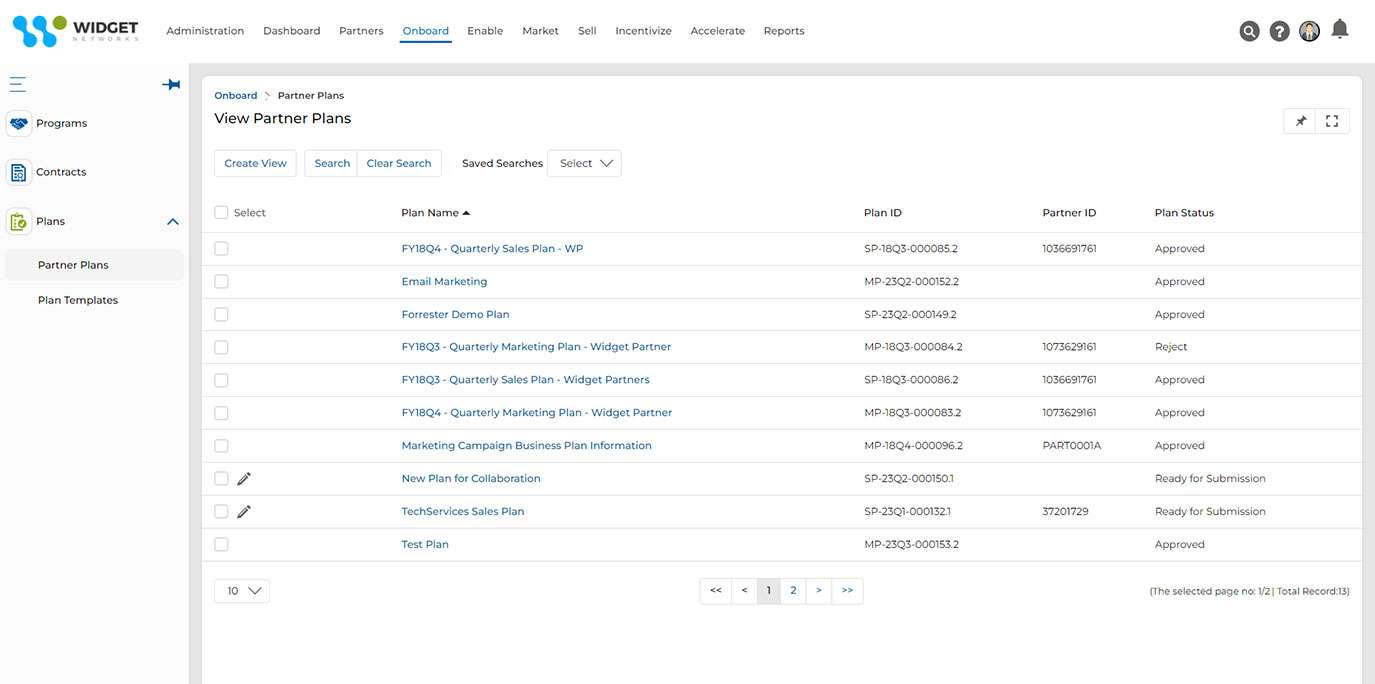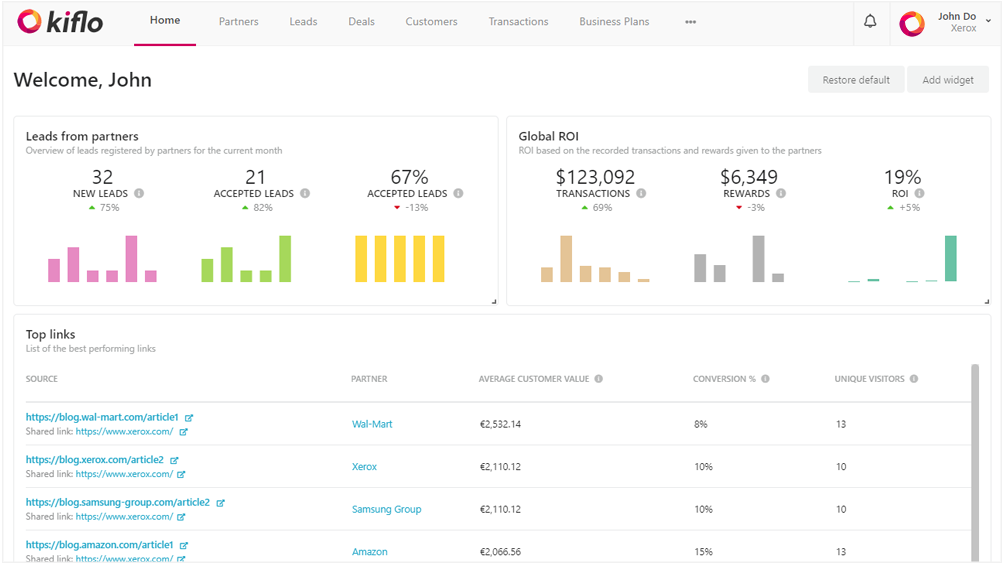Note: This is the latest in our Partnerships 101 series. You can read the others here.
Kieran Tie contributed to this post.
Even if you don’t use a PRM right now, chances are you will come across one (or many) in your work. After all, 35% of respondents in our 2021 State of the Partner Ecosystem Report said they use one.
Maybe you’re curious and want to try it for yourself. Maybe you realize that chances are one of your current or future partners falls into this group and understanding how they use it will strengthen your partnership. Either way, knowing what a PRM does and the various options out there will help you be a more informed partner professional, both within your own company and within your partner relationships.
(Interested what the data will say this year? Sign up to get the 2022 State of the Partner Ecosystem Report.)
Serving a wide range of partner ecosystems here at Crossbeam gives us an insider’s perspective on which tools work best for different partners. We’ve put together a top-level overview of common PRM tools on the market in 2022.
But before we jump in, let’s get clear on the basics: what “PRM” stands for, how they function, and why you might be hearing about them more often. Then, we’ll explore some of the most popular options.
Jump ahead:
What is a
PRM?
Partner Relationship Management (PRM) tools help channel sales managers and channel marketers connect and automate all the pieces of their partner management process within one tool. Think of PRM as a gated portal solely dedicated to serving your channel partners.
This is not to be confused with a Customer Relationship Management (CRM) tool — although CRM makers also sometimes make PRMs and many PRMs offer CRM integrations.
PRM tools allow partner managers to remove redundant steps from their workflow and optimize (or even automate) essential tasks like education or lead registration. In turn, they can achieve more in less time, keeping partners happy and productive—and happy partners lead to a growing ecosystem.
Common features for PRM tools
While every partner program has its differences, most PRM tools include the same core functionality:
- Automating partner onboarding
- Providing partners with a central management portal that’s easy to set up and manage
- Sharing educational and sales
enablement resources - Simplifying the process of logging leads and deals
- Enabling fast payments of affiliate commissions
- Forecasting channel sales and analyzing which partners are most effective
- Preventing sales and channel conflict by ensuring leads aren’t assigned to more than one partner
A birds-eye view of the
PRM software space
In its 2021 report on the Channel Software Tech space, Forrester noted that “channel software” made $2.8 Billion in revenue and expects to grow to $5.7 billion in 2026. And as you can see from the chart below, $427 million of that includes PRMs.

“With the rapidly shifting partner landscape, channel leaders and B2B marketers can no longer succeed with manual, human-centric processes or rely on spreadsheets to manage their partner programs,” writes Jay McBain, Principal Analyst for Forrester.
With so many new tools in an already crowded space, the challenge becomes choosing the right PRM solution for your needs. There’s no one-size-fits-all answer: while most partner programs follow the same best practices, every company has different workflows, different requirements, and different challenges.
To help you make the right decision, let’s dive into our list of PRM tools.
The top PRMs
10% of 2021 SOPE respondents use Salesforce PRM.
For companies already using Salesforce as their customer relationship management or “CRM” solution, Salesforce Partner Relationship Management is a strong contender in the partner management space.

Salesforce PRM integrates tightly with the company’s existing CRM functionality—users can launch and customize a complete client portal for both desktop and mobile, without needing to learn new tools or code. Salesforce also provides out-of-the-box lead management workflows, and channel performance report—companies can deliver qualified leads to partners automatically, prevent lead conflicts, and more. The numbers back this up: Salesforce claims that companies that use Sales Cloud PRM have observed a 46% increase in partner engagement, a 33% increase in deal registration, and a 33% increase in partner collaboration.
Salesforce PRM typically serves channel managers and channel sales teams across industries ranging from consumer electronics and computer software through to non-profits, real estate, professional training, and more. Reviews from G2 Crowd are evenly spread across small businesses, mid-market companies, and large enterprises. Salesforce does not publicly provide pricing information for its PRM solution.
8% of 2021 SOPE respondents use PartnerStack.
PartnerStack positions their PRM platform as a full-stack solution for SaaS companies to manage their partner marketing, referral, and reseller channel activities from a single platform.

PartnerStack’s customer base which includes companies such as Asana, Drift, Gorgias, and Intuit use the PRM to power their referral and affiliate programs. PartnerStack also offers technology partners the opportunity to generate new revenue and promote their products through the PartnerStack Marketplace.
PartnerStack’s reviews on G2 indicate that the tool is mostly used by small businesses with up to 50 employees and mid-market companies with up to 1,000 employees. According to G2, PartnerStack does not provide pricing information.
5% of 2021 SOPE respondents use Allbound.
With their recent announcement of a European based PRM, Allbound is a PRM option that’s rapidly growing.

Allbound advertises a customizable partner portal, saying partners can get onboarded and start leveraging the tool immediately, without needing training. Partner managers can make training materials like instructional videos and quizzes accessible to partners when they need it, simplifying the experience for partners and increasing engagement. Allbound also assigns a dedicated Customer Success Manager to each client—in addition to helping with setup, CSMs also share insights into best practices and strategies for overcoming common partnership obstacles.
The Allbound PRM platform offers “Standard”, “Growth”, and “Premium” pricing plans. You can request pricing here.
5% of 2021 SOPE respondents use Impartner.
According to G2, Impartner serves clients ranging from small and midsize businesses to Fortune 500 organizations, helping companies build their PRM in what they claim to be as few as 14 days. They recently announced a $50 million funding round.

Impartner’s core platform includes features common to most PRM tools out of the box, like partner recruiting and onboarding and deal registration. Impartner offers optional modules for features like partner location, business intelligence, co-branded collateral, and event calendars. Impartner offers real-time integration with top CRM tools like Salesforce. The integrated platform means partner managers can be up and running quickly.
According to G2, Impartner costs $2,000 annually, with additional fees for extra features.
1% of 2021 SOPE respondents use WorkSpan.
WorkSpan drives collaboration for Cloud, Software, Hardware, System Integrator (SI), and Managed Service Provider (MSP) partner teams through a single platform.

WorkSpan is a shared system between you and your partners: You get a record of your partnering activities while your partner gets a record for their partnering activities with you. WorkSpan also offers integration with both your and your partner’s CRM and internal systems, tracking the performance of your partnering activities. The offered weekly pipeline reviews and Quarterly Business Reviews (QBRs) give timely feedback that is specific to both you and your partner’s context.
According to G2 WorkSpan is primarily used by mid-to-enterprise-sized companies. Their customer list includes Microsoft, Lenovo, Accenture, NetApp, and SAP. Pricing is not available via G2.
.6% of 2021 SOPE respondents who use a PRM use PartnerPortal.io.
PartnerPortal.io is a self-serve, multi-tenant PRM solution with a focus on helping companies scale their partner programs.

According to the website, PartnerPortal.io is built for scalability. The tool allows your team to track and close-rates, revenue, commission payments, which partners are bringing in new business, their pay rate, and their value add to your company within the centralized platform. The PRM advertises an easy-set up including your customized logo, domain name, and color scheme and an average onboarding-to-launch time of two days. It integrates with payment, accounting, and customer management services such as PayPal, Stripe, QuickBooks, Salesforce, and HubSpot. And, most importantly, PartnerPortal.io also integrates with Crossbeam.
With the focus on scalability, PartnerPortal.io is mainly used by small to midsize companies according to their G2 reviews. G2 lists their three pricing options: free, “plus” ($399 per month), and “enterprise” ($999 per month) pricing options.
ZINFI’s partner relationship management tool offers a robust array of feature modules and lets companies pick and choose only the features and tools they need, integrating with what’s already in place.
Most companies selling through the channel have some existing infrastructure—it’s often not practical to rip and replace what’s already working. By splitting optional features out from their core platform, ZINFI’s partner relationship management tool lets companies pick and choose only the features and tools they need, and integrate with what’s already in place.

A screenshot of ZINFI’s PRM Partner Business Management feature. Image via ZINFI
ZINFI’s modules let partner managers configure the service to fit the organizations’ existing infrastructure. As your partner program expands and you define more procedures and policies, you can add more modules without increasing costs. This modular approach makes it easy for new partner managers to get started without feeling overwhelmed.
ZINFI addresses the channel management needs of all sizes of organizations. According to G2, the company doesn’t share pricing information publicly.
Recently acquired by Revalize, LeadMethod offers a PRM platform for companies selling through distributors but struggling to turn leads into sales.

LeadMethod helps companies engage their distributors and help them sell more. The company claims that its clients observe 10-20% revenue growth. Their real-time dashboard helps sales reps identify high and low performers, visualize their sales pipeline and revenue estimates by region, and measure the ROI and conversion rates across marketing channels. The platform can be used as a stand-alone tool or integrates with over 65 CRM, marketing automation, and Enterprise Resource Planning (ERP) systems.
Reviews on G2 also show that LeadMethod is mostly used by small businesses and mid-market companies. LeadMethod does not publicly provide pricing information.
Particularly for first-time partner managers, PRM tools can feel overwhelming. Magentrix‘s PRM platform makes it easy for new users to get started —”It’s not magic,” states their website headline, “It’s Magentrix.”

Their playbooks tool lets partner managers target different prospects at different stages in the sales cycle with the right content, and deliver content to channel partners to use as a sales enablement tool.
Looking at reviews from G2, Magentrix is most popular with mid-market companies, although some small businesses and large enterprises also use the platform. Customers note their quality of support, with staff often making adjustments to the platform itself to best meet the needs of their customers. According to G2, their “elite” pricing option for the PRM comes in at $1,499 per month. They do offer a discount for non-profit organizations.
A PRM with features focused on the scalability of a partner program is great for companies just getting started, but complex design can make user adoption difficult. Kiflo offers a platform structure and beginner-friendly user experience that makes scaling possible.

There are three distinct kinds of partnerships that Kiflo helps users scale through their PRM: affiliate, referral, and reseller. Features include supporting the acquisition of bulk leads, automating a rewards system for partners through a Stripe integration, a CRM sync, and integrations with over 3,000 apps including HubSpot, SalesForce, and QuickBooks.
Kiflo is most popular with small and midsize companies according to their G2 reviews. Customers specifically note the easy user experience and customization and low price point. Kiflo offers two pricing options: the “Accelerate” version is priced at $299 a month while the slightly more robust version “Scale” is priced at $399 a month. Both options include a free trial.
Channeltivity is a PRM that delivers a wide array of tools to it’s 40,000+ channel professionals. The website claims the PRM has quick setup and user friendly features, making it a good option for someone wanting to launch their PRM rapidly and with ease.
.png)
A screenshot of the Channel Partner Portal. Image via Channeltivity
Channeltivity offers a variety of features including a customizable partner portal that’s easy to use and doesn’t require IT support, a Channel management portal, social media connectivity, and a resource library. Salesforce and HubSpot users are in luck — Channeltivity has two versions specifically designed to integrate with the popular CRMs. Check them out: HubSpot edition and Salesforce edition.
Their G2 reviews highlight easy user adoption, integration, and customer support.
According to their G2 reviews, Channeltivity serves small, midsized, and enterprise companies. They offer three pricing options: standard ($1,399 per month), Salesforce, and HubSpot (both $1,699 per month).



